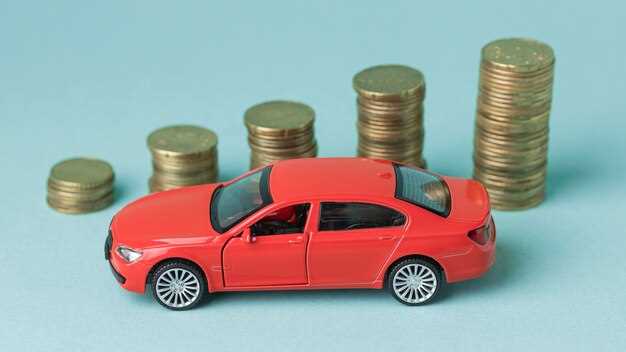Benefits of trading in your old vehicle

When considering the transition from an old vehicle to a new model, one of the most significant advantages to embrace is the potential to enhance your vehicle’s value through a trade-in. This process simplifies the purchasing journey, allowing car owners to benefit from their current vehicle while simultaneously investing in a more reliable or desirable model. Understanding the trade-in value can lead to wiseful decisions, ultimately making the purchase of a new vehicle more financially feasible.
In addition to financial benefits, trading in your old vehicle can streamline the buying experience. By working with a dealership, you can eliminate the hassle of private sales and negotiations. Instead, the trade-in process provides a more straightforward and efficient way to allocate your old car’s value towards a new purchase. This convenience allows you to focus on selecting a vehicle that meets your needs without the added stress of selling your old one independently.
Moreover, trading in your vehicle can also provide potential savings on taxes and fees, depending on your location. Many states allow buyers to deduct the trade-in value from the new car’s price, which can significantly decrease the amount of sales tax owed. Thus, executing a trade-in can be an effective strategy to not only acquire a new vehicle but also optimize your financial commitment in the long run.
Maximizing Your Car’s Value During Trade-In

To ensure you get the best possible value for your vehicle during a trade-in, it is essential to prepare adequately. Start by researching the current market trends and determining the average selling price for your car model. Websites like Kelley Blue Book or Edmunds can provide valuable insights into your car’s value based on its condition, age, and mileage.
Next, focus on the condition of your car. Ensure that your vehicle is clean, both inside and out. A thorough cleaning can significantly enhance its appeal and give potential buyers a better impression. Additionally, consider taking care of minor repairs and maintenance issues, such as oil changes or tire rotations, as these can positively influence the perceived value of your car.
Keeping detailed maintenance records can also boost your car’s value. Prospective dealers appreciate knowing that a vehicle has been well-maintained, as it indicates reliability and longevity. Highlighting any upgrades or added features, such as a premium sound system or advanced safety features, can further enhance your vehicle’s allure during the trade-in process.
Lastly, timing your trade-in can play a pivotal role in maximizing value. Consider trading in your car during peak times when demand is high, such as spring or summer when sales typically surge. By following these steps, you can significantly increase your car’s value during the trade-in process and make the transition to a new vehicle more financially beneficial.
Understanding the Trade-In Process and Its Benefits

When considering the acquisition of a new vehicle, the trade-in process is a vital step that can significantly influence your overall financial scenario. Trading in your old car allows you to capitalize on its value, providing you with a seamless transition to a new model. Understanding this process can empower you to make informed decisions that optimize your investment.
First, it’s essential to assess the current market value of your car. Researching online resources and utilizing valuation tools can give you an accurate estimate of your vehicle’s worth. Knowing this information will help you negotiate effectively with dealerships and ensure that you receive a fair trade-in offer.
Once you have established your car’s value, the next step is to prepare your vehicle for trade-in. This involves cleaning the interior and exterior, addressing minor repairs, and gathering necessary documentation, such as the title and service records. A well-presented car is more likely to attract a higher appraisal, maximizing its trade-in value.
During the trade-in appraisal at the dealership, be prepared to discuss your car’s condition, history, and any upgrades or modifications you’ve made. This transparency can help justify the price you believe your vehicle is worth. Moreover, the trade-in amount will be deducted from the purchase price of your new car, effectively lowering your out-of-pocket expenses and potential tax liabilities.
One of the main benefits of trading in your old vehicle is the convenience it offers. Instead of dealing with the hassle of selling your car privately, which can involve extensive marketing, negotiations, and paperwork, trading in allows you to streamline the process. You can make a single transaction to offset the cost of your new vehicle, making the entire buying experience smoother.
In summary, understanding the trade-in process and its benefits not only helps you capitalize on your old vehicle’s value but also simplifies the transition to a new car. By conducting thorough research, preparing your vehicle, and engaging effectively with the dealership, you can enhance your trading experience and ensure a favorable outcome.
Cost Savings and Financial Incentives for New Car Purchases
When it comes to acquiring a new vehicle, trading in your old car can provide substantial cost savings and financial incentives. Understanding these benefits is crucial for making the right decision during your vehicle upgrade.
- Higher Trade-in Value: Trading in your vehicle allows you to receive a cash value that can be applied directly toward the purchase of a new car. This trade-in value can significantly lower the overall price of your new vehicle.
- Reduced Sales Tax: In many regions, you only pay sales tax on the difference between the new car’s price and the trade-in value. This can result in considerable tax savings compared to a straight purchase.
- Manufacturer Incentives: Car manufacturers often offer incentives for trading in old vehicles. These can include rebate programs or special financing rates for customers disposing of an older model.
- Maintenance Savings: Old cars typically require more maintenance and repairs, which can add up significantly. A new car often comes with a warranty, minimizing unexpected expenses associated with an aging vehicle.
- Improved Fuel Efficiency: Newer car models tend to feature advanced technology and better fuel efficiency, resulting in lower fuel costs over time. This can lead to significant savings on your monthly expenses.
- Lower Insurance Premiums: A new car may also afford lower insurance premiums, especially if it includes modern safety features that reduce the risk of accidents.
These cost savings and financial incentives make trading your old vehicle for a new one a smart financial decision. By maximizing the value of your current car, you can secure a better deal on a new model while enjoying additional long-term savings.

